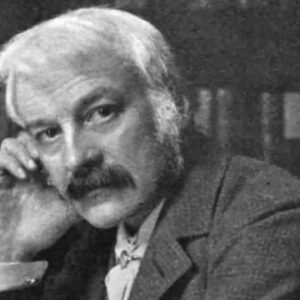Andrew Lang was a Scottish author and literary critic best known for collecting and publishing a series of folk and fairy tales. He was also a superb poet and novelist in his own right, but it was his collection of fairy tales that brought him widespread renown, not his own literary accomplishments. Lang’s passion for folklore arose from his youth spent in the scenic Scottish Borderland of Selkirk, a magnificent and enchanted area that sparked his imagination. Reading Grimm’s Fairy Tales amid the tranquil woods and experiencing the rustic charms of village life inspired him to explore further into the magic and mystique of folklore. He studied to become a journalist and edited Longman’s Magazine. The magazine articles he penned, characterized by dry wit and sardonic sense of humor, made him a household name. In addition to writing poetry and fiction, he never lost his boyhood interest in fairy tales. He painstakingly gathered folktales and fairy tales from all around the world and published them in a series for his fans. His books transformed children’s literature as they became wildly popular with children.
Youth and Early Life
He was born in Selkirk, Scotland, on March 31, 1844, to John Lang, the town clerk of Selkirk, and Jane Plenderleath Sellar, his wife. He was the oldest sibling of eight.
Listening to and reading legends of Bonnie Prince Charlie and Robert the Bruce, he developed a fondness for nature while growing up in the picturesque town of Selkirk. His ideal upbringing fostered a lifelong interest in folklore and fairy tales.
He attended Selkirk Grammar School for his early education before enrolling at the Edinburgh Academy, St. Andrews University. Subsequently, he attended Oxford’s Balliol College.
He was an intelligent student with a natural fondness for reading. He was also a talented poet and writer.
Andrew Lang’s Career
He became a published poet and relocated to London in search of better employment prospects. There, he began his career as a journalist. He was gifted with a dry wit and cynical sense of humor, which endearingly attracted him to his readers.
The combination of his broad topic expertise and entertaining writing style made him a popular author. He was the editor of ‘Longman’s Magazine’ and also contributed a column to the publication.
He wrote scores of articles and essays for newspapers and journals such as ‘Cornhill Magazine,’ ‘Macmillan’s,’ ‘The Daily Post,’ ‘Fortnightly Review,’ ‘The Overland mail,’ and ‘Time’.
He was a well-known historian for his works on folklore, mythology, and religion. The 1884 publication ‘Custom and Myth’ is one of his earliest works. In 1887, he published “Myth, Ritual, and Religion,” in which he discussed the illogical aspects of mythology.
In the late 19th century, he observed that native fairy tales were losing appeal with the general public and were being criticized by certain educationalists as damaging to children. In an effort to disprove this notion, he began collecting and publishing traditional folktales for youngsters.
While other folklorists gathered unrecorded tales from their original sources, Lang opted to collect those tales that had already been recorded. He gathered tales from all around the world, including several by renowned authors like the Grimm Brothers and Madame d’Aulony. He also collected tales from obscure sources.
In 1889, he released “The Blue Fairy Book.” The wonderfully illustrated collection of captivating fairy tales was an instant hit. The stories’ ability to enchant both adults and children inspired Lang to continue the series.
The following year, he and his wife wrote The Red Fairy Book (1890), which was an even greater hit than its predecessor. He went on to publish many additional volumes in the series, each with its own color designation.
Between 1900 and 1910, he added ten more books to the series, the last of which was “The Lilac Fairy Book.”
His series of fairy books sparked a revival of interest in folklore and magical tales and resurrected the practice of parents telling children lovely fairy tales. He transformed children’s literature and encouraged many others to undertake similar projects and publish their own collections of fairy tales.
In a cruel twist of fate, despite being a great writer with books and poems to his credit, Lang became wildly popular for a collection of stories he did not compose.
His Major Opera
His ‘The Rainbow Fairy Books’, a compilation of folklore and fairy tales published in a series of 12 brilliantly illustrated volumes, are his most well-known works. The collection has 437 tales collected from many cultures and regions.
Awards & Achievements
He was awarded Doctorates in Classics by St. Andrews University (1885) and Oxford University (1904).
Personal History and Legacy
In April 1875, he wed Leonora Blanche Alleyne, the youngest daughter of C. T. Alleyne, whom he met in London. The couple had no children. The stories in ‘The Rainbow Fairy Books’ were substantially edited and organized by his wife.
During his later years, he experienced poor health. On July 20, 1912, he died due of Angina pectoris.
Estimated Net Worth
Andrew Lang is one of the wealthiest and most well-known poets. According to our research, Wikipedia, Forbes, and Business Insider, Andrew Lang has an estimated net worth of $1.5 million.


